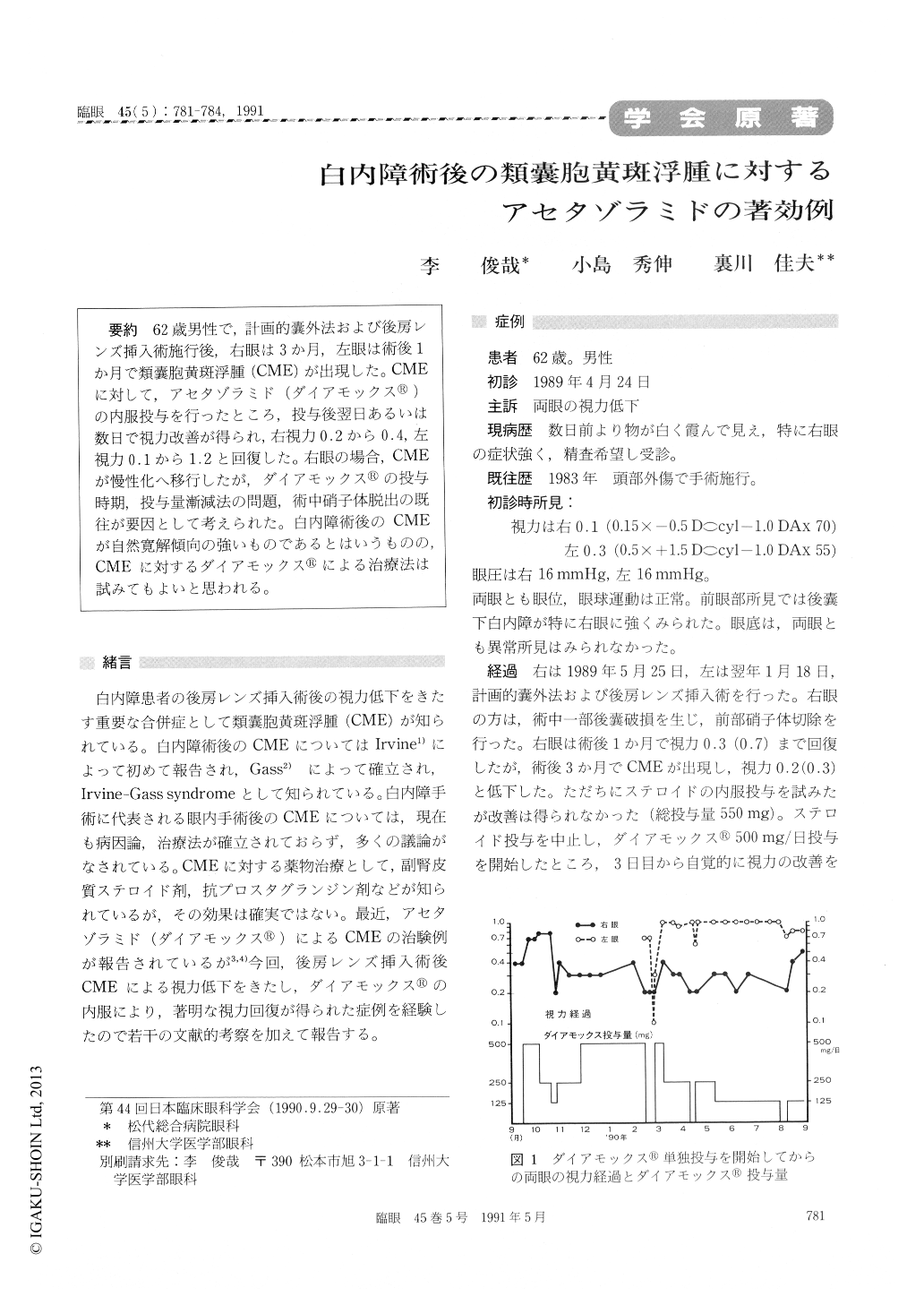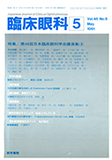Japanese
English
- 有料閲覧
- Abstract 文献概要
- 1ページ目 Look Inside
62歳男性で,計画的嚢外法および後房レンズ挿入術施行後,右眼は3か月,左眼は術後1か月で類嚢胞黄斑浮腫(CME)が出現した。CMEに対して,アセタゾラミド(ダイアモックス®)の内服投与を行ったところ,投与後翌日あるいは数日で視力改善が得られ,右視力0.2から0.4,左視力0.1から1.2と回復した。右眼の場合,CMEが慢性化へ移行したが,ダイアモックス®の投与時期,投与量漸減法の問題,術中硝子体脱出の既往が要因として考えられた。白内障術後のCMEが自然寛解傾向の強いものであるとはいうものの,CMEに対するダイアモックス®による治療法は試みてもよいと思われる。
A 62-year-old man suffered from bilateral cystoid macular edema (CME) occurred after planned extracapsular cataract extraction with intraocular lens implantation is reported.
A rupture of the posterior capsule occurred during the operation of the right eye and the anterior vitrectomy was performed. Two months after the operation the right corrected visual acuity decreased from 0.7 to 0.2 and fundoscopic examination revealed CME. The administration of steroid was initiated, but no improvement of the visual acuity was noted. A few days after the treatment of the CME with acetazolamide (Diamox®), the corrected visual acuity improved from 0.2 to 0.4.
One and a half months after the operation, the left corrected visual acuity decreased from 0.9 to 0.1 and fundoscopic examination revealed CME. Nine days after the Diamox® administration, the left corrected visual acuity improved from 0.1 to 1. 2. The relative failure of the treatment with Diamox® in the right eye was presumably due to the prolonged period between the visual loss and the initial treatment, inappropriate dose of the drug and a rupture of a posterior capsule in the operation. Diamox® may be effective in treating the patient with CME.

Copyright © 1991, Igaku-Shoin Ltd. All rights reserved.


